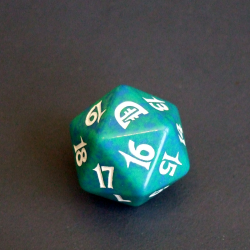Hackaday editors Elliot Williams and Mike Szczys marvel at the awesome hacks from the past week. We had way too much fun debating whether a wind-powered car can travel faster than the wind, and whether or not you can call that sailing. Low-temperature desoldering was demystified: it’s the bismuth! And we saw a camera gimbal solve the problem of hand tremor during soldering. Ford just wants to become your PowerWall. And the results are in from NASA’s mission to spin mice up in a centrifuge on the ISS.
Take a look at the links below if you want to follow along, and as always, tell us what you think about this episode in the comments!
Direct download (around 55 MB)
Places to follow Hackaday podcasts:
Episode 122 Show Notes:
 What’s that Sound?
What’s that Sound?
- We had twenty correct answers, it was the sounds of Starcraft.
- Congratulations to [Omer] who was chosen with the roll of a D20 from the correct responses and sent a Hackaday Podcast shirt.
- Check out this strange D20 from Elliot’s wife’s dice bag.
New This Week:
Interesting Hacks of the Week:
- Sailing Faster Than The Wind Itself
- Aquarium Plotter Shows Sisyphish’s Submerged Sand Stripes
- An ALU As A Desktop Calculator Has Stunning Style From Days Gone By
- Soldering Iron Plus Camera Gimbal Helps Cancel Out Hacker’s Hand Tremors
- Triangle Tiles Form Blinky Networks Using Clever Interconnects
- Make Your Desoldering Easier By Minding Your Own Bismuth
Quick Hacks:
- Elliot’s Picks
- Mike’s Picks:
















On the 12 volts, I am pretty sure that most fans and cooling systems on a modern PC use the 12 volt like from the ATX power supply.
the dice is from the Magic the Gathering trading card game
more specific the deckmaster box grafield vs finkel 2001
there are 5 differnt colors – this one is worth about 5 €
and it isnt actually a dice but a spindown life counter in the shape of a w20
Umm…damn! Thanks :).
Just think of the cable diameters. Just as an example (which makes calculating easy): 600W @ 12V: 50A; 600W @ 5V: 120A. Now put cables for 120A into your PC. The cross-section would be similar to cables you find between the battery and the starter in your car. And than what about connectors dealing with such cables on a motherboard?
To me this seems to be somewhere a tradeoff between the maximum voltage the regulators on the mainboard can safely handle and cable cross-section.
That’s a good point!
Hi, I designed and built the Blackbird and while it’s great to see the craft discussed, there is SO much wrong in the related podcast discussion.
1: Sailing can be on any surface — Google “Land Sailing”
2: The claim is made in the discussion that at startup, the propeller acts as a windmill and drives the wheels. This is incorrect. At no speed does the rotor drive the wheels. At all speeds, the wheels drive the rotor. (seems crazy, but all part of the weird, counterintuitive nature of the Blackbird).
3: The ‘sails on a cylindrical earth is not a ‘red herring’ – it’s literally the way the blades of the rotor on the Blackbird work. The gearing between the wheels and the rotor provide the exact kinematic constraint provided by the keel of the sailboat shown in the animation — ensuring that for every unit measure of downwind distance, a ratio unit measure of crosswind is introduced. Without this constraint, both the sailboat and the Blackbird would merely drift downwind at something less than windspeed. The spinning blades of the Blackbird, literally are two wingsails (not unlike those on America’s Cup boats) on a continuous spiraling broad reach.
https://en.wikipedia.org/wiki/Blackbird_(wind-powered_vehicle)